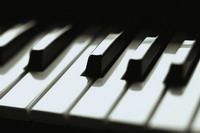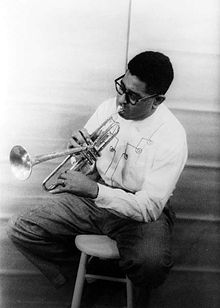Piano Sheets > Dizzy Gillespie Sheet Music > A Night In Tunisia (ver. 1) Piano Sheet
A Night In Tunisia (ver. 1) by Dizzy Gillespie - Piano Sheets and Free Sheet Music

About the Song
Other avaliable versions of this music sheet: Version 1 Version 2
"A Night in Tunisia" is a musical composition written by Dizzy Gillespie (recorded with musicians including Hal McKusick and Al Cohn) in 1942 while he was playing with the Earl Hines Band. It has become a Jazz standard. It is also known as "Interlude"[1], under which title it was recorded (with lyrics) by Sarah Vaughan. Gillespie himself called the tune "Night in Tunisia".
"A Night in Tunisia", along with "Manteca", was one of the signature pieces of Gillespie's bebop big band, and he also played it with his small groups. One of its most famous performances is Charlie Parker's recording for Dial (Dial even released a fragmentary take of it simply titled "The Famous Alto Break"); it also became closely identified with Art Blakey's Jazz Messengers, who often gave showstopping performances of it with extra percussion from the entire horn section.
On the album A Night at Birdland Vol. 1, Blakey.
Download this sheet!
About the Artist

Random article
Getting access to free sheet music for Christmas Christmas is one time when everyone wants to learn how to play the piano. There are so many Christmas carols, hymns and other compositions played. In such a situation, you will find it useful to get free sheet music especially with the Christmas compositions in them.
New age and classical
One of the best advantages about free sheet music is that you can get both classic as well as New Age Christmas musical notes. That means you will be able to play the old time classical compositions, carols etc. and the new artists compositions. The New Age Christmas musical notes are very poignant and lovely and playing these piano notes is sure to stir hearts. One of the drawbacks about New Age Christmas music sheets is that they are very difficult to access. Most New Age albums do not sell too well and hence the demand for these is lesser. In this context, getting access (More...)
